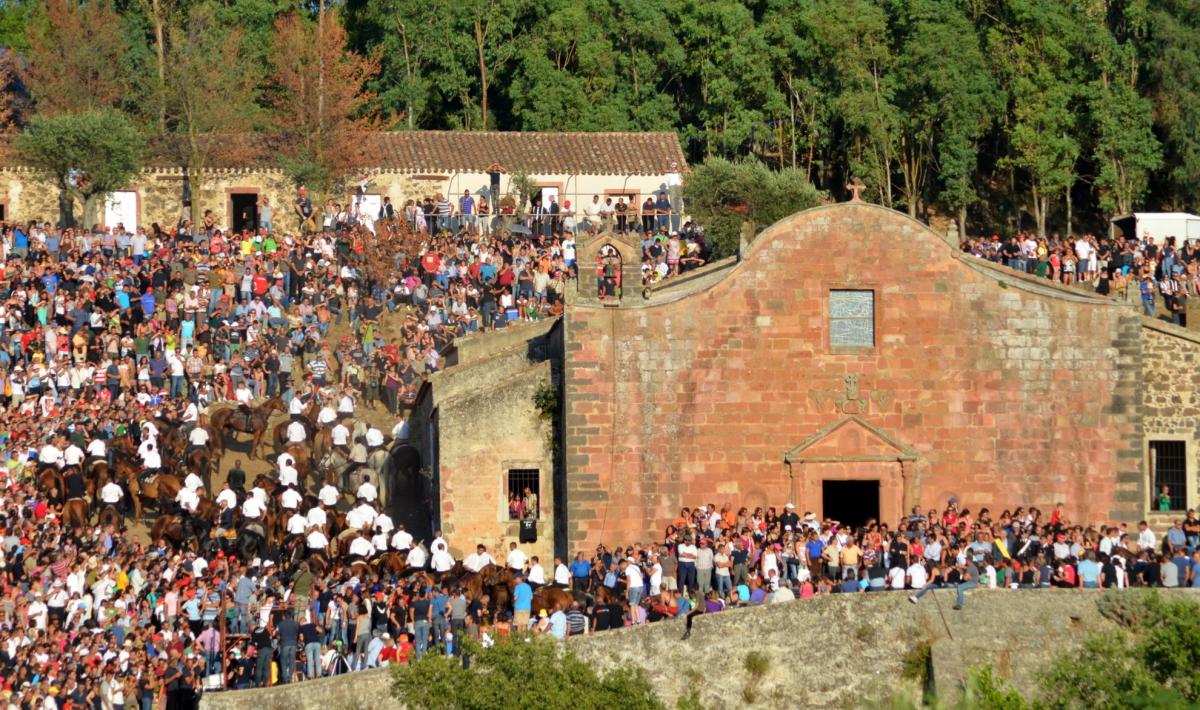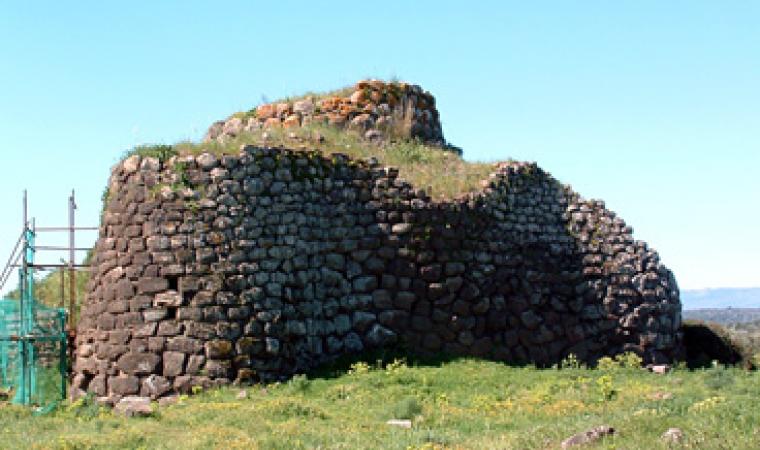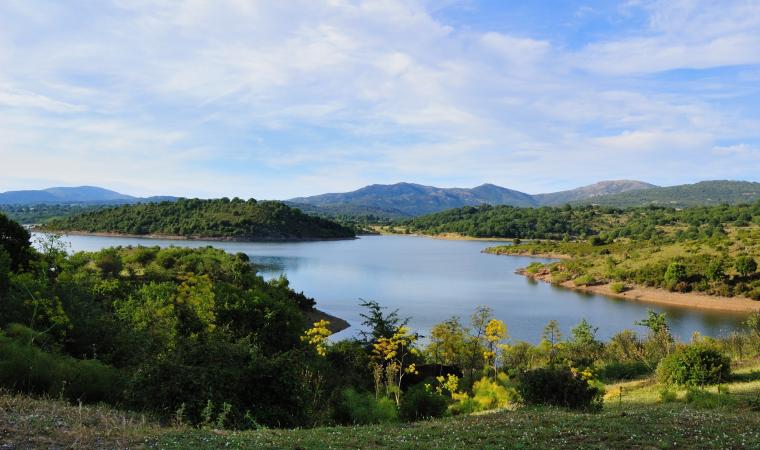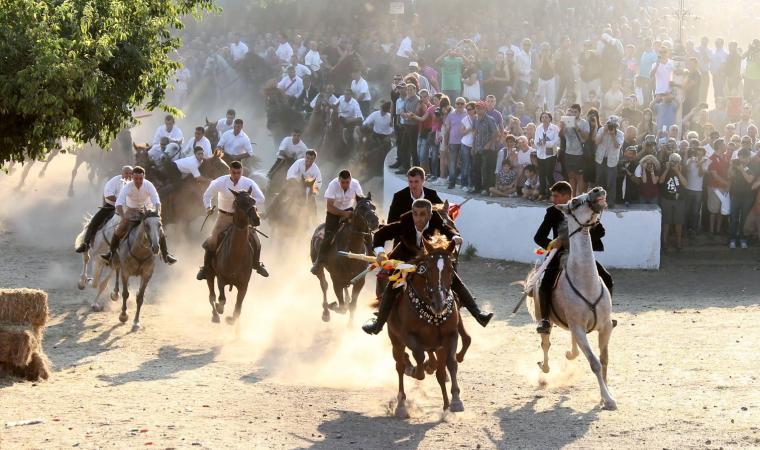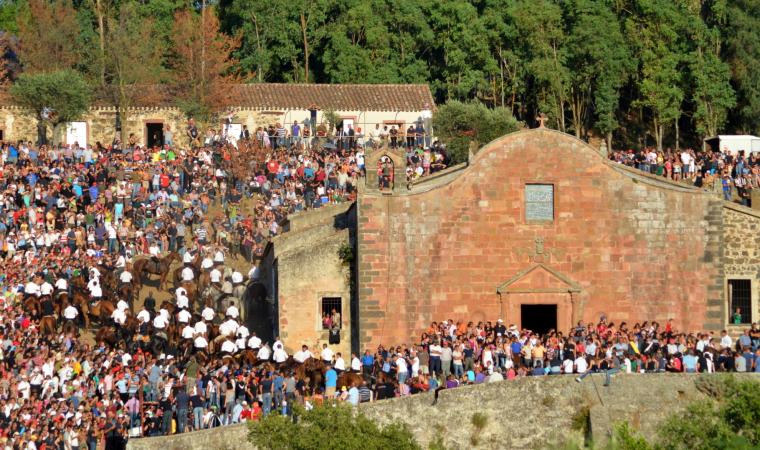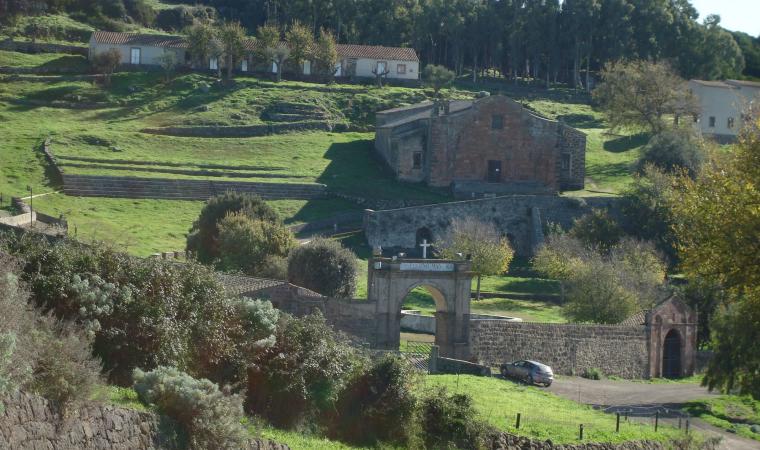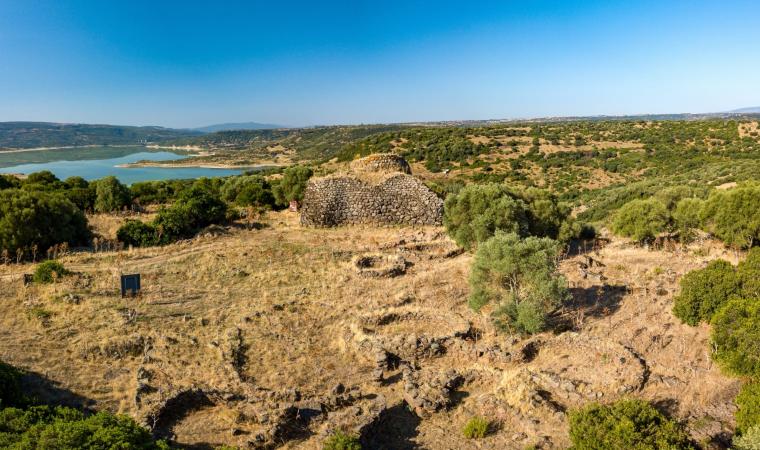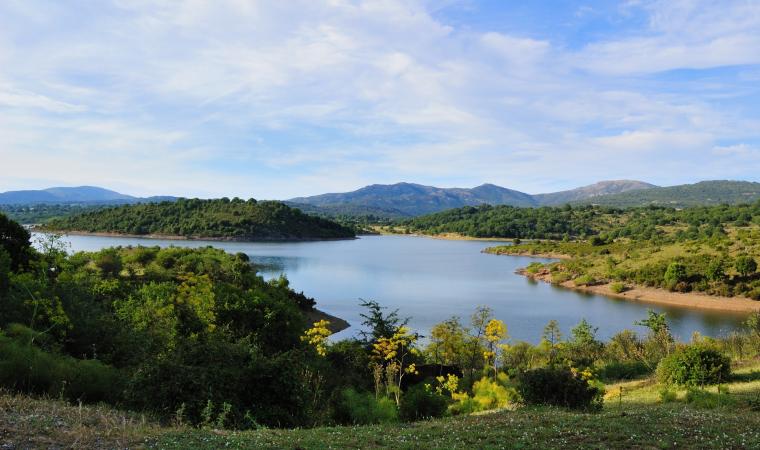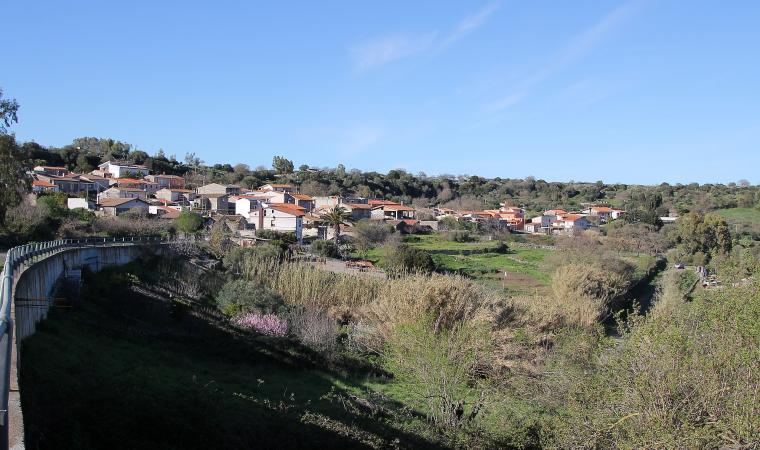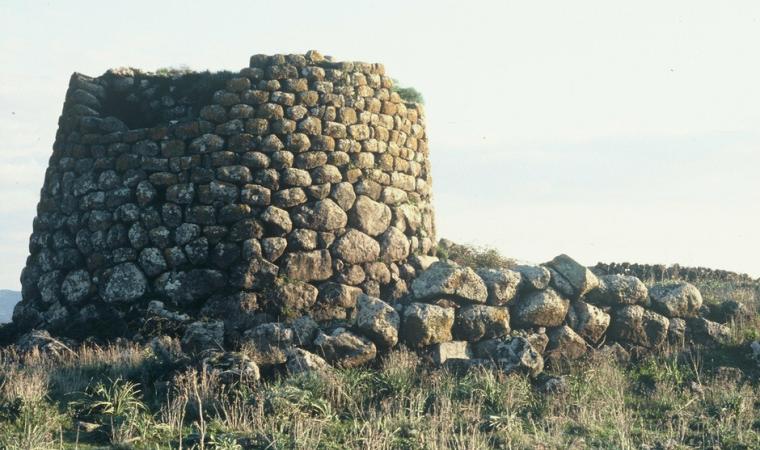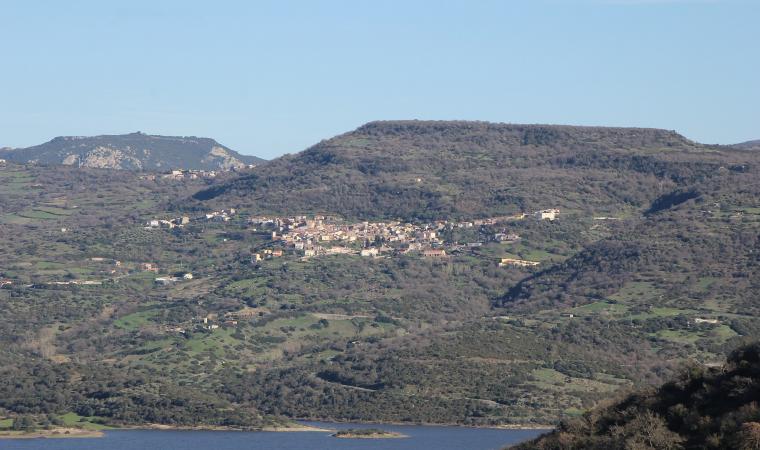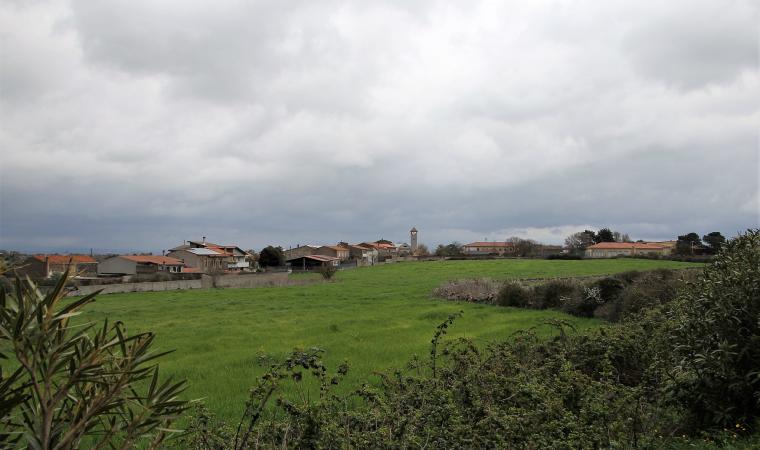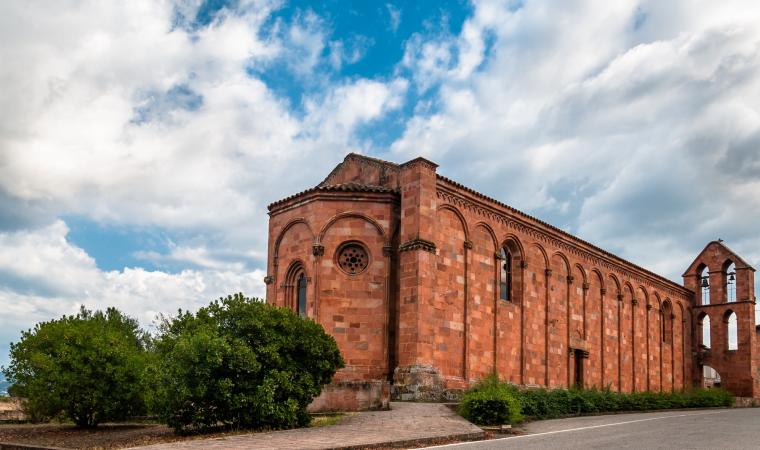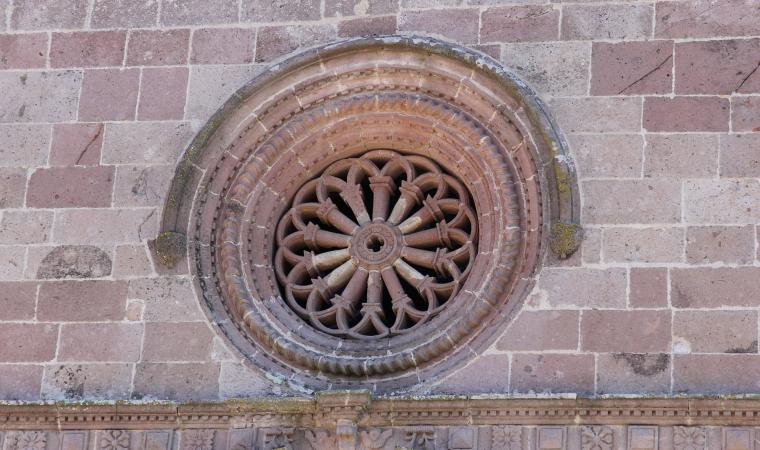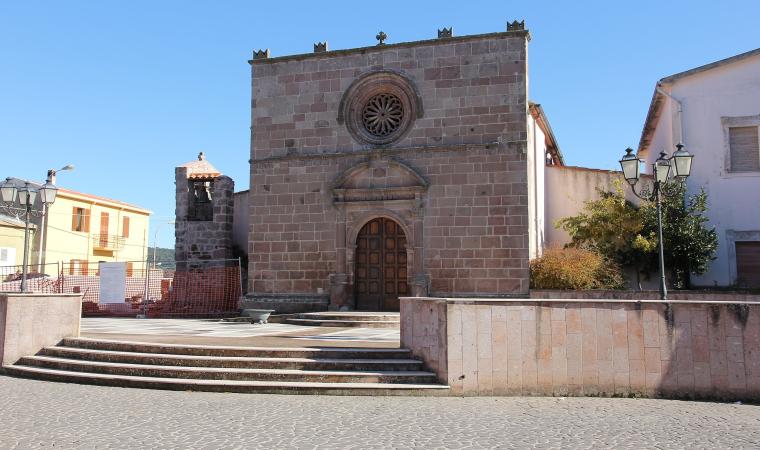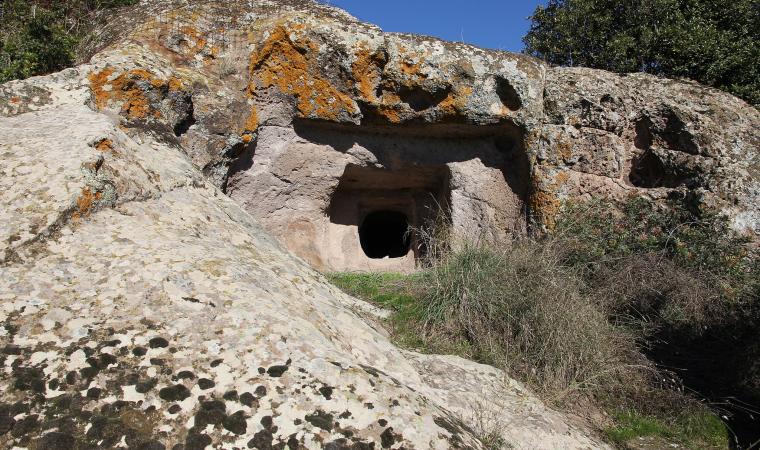It is known as Santu Antinu.in the Sardinian language. The rural church of San Costantino, in the territory of Sedilo, overlooks the splendid scenery of Lake Omodeo, the largest artificial basin on the Island (for a long time also the largest in Europe). Along the perimeter of the sanctuary are the buildings used as accommodation for pilgrims, known as cumbessias or muristenes.
The year in which it was founded is unknown but there is certainty regarding San Costantino Imperatore’s very ancient origin. The current building, in Gothic Catal style, dates back to the 16th century and it underwent renovation work in the 18th century. Of the original structure, the quadrangular presbytery still remains and has a ribbed cross vault with suspended capitals sculpted at the base.
The hall, which is divided into three naves by pillars and rounded arches, has a barrel vault. The interior ends, just before the presbytery, with a pointed arch. The façade is made of exposed red trachyte and ends with a curvilinear shape. On top of the portal, there is a tympanus supported by two semi-pedestals. On the sides and inside the tympanus, you can see three niches and there is a rectangular window above. On the left side of the facade, there is a small belfry. Inside the sanctuary there are numerous ex voto offerings on display.
Around the church, at sunset on 6 July and at sunrise on 7 July, the S’Ardia takes place, a spectacular horse race in honour of the saint, commemorating the battle of Ponte Milvio between Constantine and Maxentius. It is one of the most evocative events linked to Sardinia’s identity and it attracts thousands of visitors with its charm and daredevilry. During the ritual, the sa prima pandela (capocorsa) leads the race, followed by another two horsemen and by three escorts, symbolizing Constantine and his army. Then there are a further one hundred horsemen representing the pagans led by Maxentius.
The Sanctuary and the Ardia are the symbols of the village of Sedilo that, as well as its ancestral traditions, also features ancient stone dwellings. Its territory is perfect for excursions on foot, by bike or on horseback, particularly its forests with sign-posted trails. The geological park is not to be missed and, inside it, on the banks of Lake Omodeo, there is the Nuragic Palace of Iloi (dating back to the Middle-Late Bronze Age), consisting of a trilobed Nuraghe, a village and two Tombs of Giants. Not far away, there is another important piece of Nuragic evidence: the sacred spring of Puntanarcu. Nearby, there is also the necropolis of Ispiluncas, consisting of about thirty Domus de Janas, proving that the territory was frequented in the Pre-Nuragic period.

